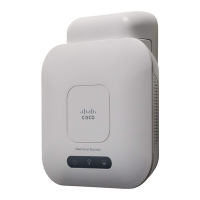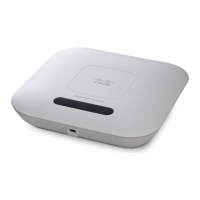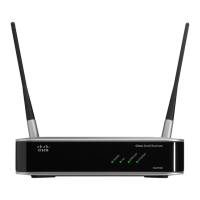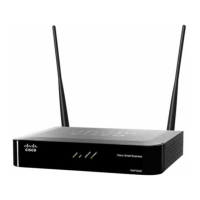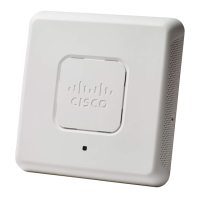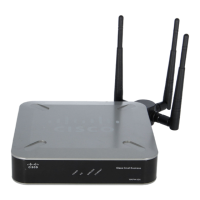• Transmit Power — A percentage value for the transmit power level for the WAP device.
The default value of Full - 100 % can be more cost-efficient than a lower percentage because it gives the WAP
device a maximum broadcast range and reduces the number of access points needed.
To increase the capacity of the network, place the WAP devices closer together and reduce the value of the transmit
power. This setting helps reduce overlap and interference among the access points. A lower transmit power setting
can also keep your network more secure because the weaker wireless signals are less likely to propagate outside of
the physical location of your network.
Some channel ranges and country code combinations have relatively low maximum transmit power. When attempting
to set the transmit power to the lower ranges (for example, Medium - 25 percent or Low -12 percent), the expected
drop in power may not occur, because certain power amplifiers have minimum transmit power requirements.
• Frame-burst Support — Generally enabling Frame-burst support improves the radio performance in the downstream
direction.
• Airtime Fairness Mode — The airtime fairness (ATF) feature was implemented to address the issue of slower-data
transfers throttling the higher-speed ones.
• Maximum Utilization Threshold—Enter the percentage of network bandwidth utilization allowed on the radio
before the WAP device stops accepting new client associations. The valid integer range is from 0 to 100 percent.
The default is 0 percent. When set to 0, all new associations are allowed regardless of the utilization rate.
• Fixed Multicast Rate — The transmission rate in Mbps for broadcast and multicast packets. This setting can be
useful in an environment where the wireless multicast video streaming occurs, provided the wireless clients are
capable of handling the configured rate.
When Auto is selected, the WAP device chooses the best rate for the associated clients. The range of valid values
is determined by the configured radio mode.
• Legacy Rate Sets — Rates are expressed in megabits per second.
The Supported Rate Sets indicate the rates that the WAP device supports. You can check multiple rates. The WAP
device automatically chooses the most efficient rate based on the factors such as error rates and the distance of client
stations from the WAP device.
The Basic Rate Sets indicate the rates that the WAP device advertises to the network for the purposes of setting up
communication with other access points and client stations on the network. It is generally more efficient to have a
WAP device broadcast a subset of its supported rate sets.
• Broadcast/Multicast Rate Limiting — Multicast and broadcast rate limiting can improve overall network
performance by limiting the number of packets transmitted across the network.
By default, this feature is disabled. Until you enable this feature, these fields are disabled:
• Rate Limit — The rate limit for multicast and broadcast traffic. The limit should be greater than 1, but less
than 50 packets per second. Any traffic that falls below this rate limit will always conform and be transmitted
to the appropriate destination. The default and maximum rate limit setting is 50 packets per second.
• Rate Limit Burst — An amount of traffic, measured in bytes, which is allowed to pass as a temporary burst
even if it is above the defined maximum rate. The default and maximum rate limit burst setting is 75 packets
per second.
• Spectrum Analysis Mode— The Spectrum Analysis Mode status can be one of the following:
• Dedicated Spectrum Analyzer—In dedicated mode, the radio is used for spectrum analysis for more than
10% of the time and the client connections may work but are not guaranteed.
Cisco WAP150 Wireless-AC/N Dual Radio Access Point with PoE / Cisco WAP361 Wireless-AC/N Dual Radio Wall Plate Access Point with PoE
50
Wireless
Radio
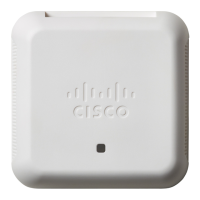
